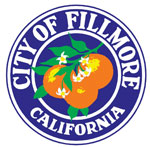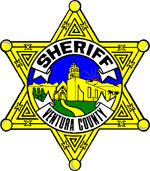|
By Anonymous — Wednesday, September 3rd, 2014
 On Thursday, August 21st new military banners were replaced in front of the Fillmore Unified School District. Veterans and family of our hometown military personnel came together for the installations. Photo courtesy Rigo Landeros. Enlarge Photo |
|
By Anonymous — Wednesday, September 3rd, 2014
On November 7, 2013 The Complaint of El Dorado Estates (Plaintiff-Appellant v. City of Fillmore (Defendant-Appellee was submitted to the US Court of Appeals for the Ninth Circuit. El Dorado, a mobile home park owner located in the City of Fillmore alleged that the City interfered with an application for a subdivision of its seniors-only mobile home park by causing unreasonable delays and imposing extralegal conditions because of a fear that subdivisions would lead to El Dorado opening the Park to families. El Dorado's complaint was dismissed for lack of standing. The court concluded, however, that El Dorado had Article III standing where El Dorado suffered a concrete and particularized, actual, injury, in the form of added expenses caused by the City's interference of the application. Accordingly, the court reversed and remanded for further proceedings. Dtd. September 2, 2014. See Judge Richard R. Clifton’s Opinion here: http://cdn.ca9.uscourts.gov/datastore/opinions/2014/09/02/12-55549.pdf |
|
By Anonymous — Wednesday, September 3rd, 2014
I, Sean Morris, am announcing my candidacy for Fillmore School Board 2014. I am a lifelong resident of Fillmore and graduated from Fillmore High School. I am married to Veronica Morris and we have two children attending Fillmore Schools. I have served on several non-profit boards and am currently President of the Rotary Club of Fillmore. I have been involved in community literacy projects, volunteered in my children’s classes, coached and served with many teachers and parents, including the District’s Reconfiguration Committee during Superintendent Jeff Sweeney’s tenure. My experience with our community through my work with the parents, administration, teachers, and students, is that we have an incredible human resource to achieve great things. Our district has not performed to its fullest potential and we need everyone to be involved on a consistent basis in order to become a distinguished center of learning. I will bring energy, listening skills and a desire to work with everyone to make Fillmore Unified School District a point of light for every student in our community. My vision is for excellence in teaching, community support, and facilities which will lead to positive growth and academic achievement in our children. I would love the opportunity to speak with any parent, parent group, teacher, school staff, business leader, Fillmore Council Member and school administrator to gain more insight and express my views. Learn more or contact me by visiting Morris4SchoolBoard.com. Morris for School Board 2014 |
|
By Mark Ortega — Wednesday, September 3rd, 2014
Come out to Central Station on Friday, Sept 12th to celebrate our Alma Mater, and the Flashes, as we gear up for Santa Paula week. Our Hometown Flashes Football team plays the Santa Paula Cardinals the following Friday, and the Alumni Association wants to paint the town Blue. They will be at Central Station with all their Flashes Merchandise, available for you so you can look awesome in you Flashes Game Day Wear for the Big Game. We're talking T-shirts, Bling wear, and other Flashes Merchandise all available to you. So come out to the last Cruse night of the summer, and show your Flashes spirit on "Alumni Night" at Central Station from 5:00pm to 10:00pm. Music, DJ provided by Central Station. GO FLASHES!! |
|
By Anonymous — Wednesday, September 3rd, 2014
08/12/14 - 08/18/14
08/12/14 |
|
By Jean McLeod — Wednesday, August 27th, 2014
 Fillmore Police Chief Dave Wareham addresses council about new security cameras to be installed at different city locations. At the August 26, 2014 Fillmore City Council Meeting Police Chief Dave Wareham announced Fillmore will have a new eye in the sky at three locations. This is due to the efforts of Sheriff Geoff Dean and Council Member Diane McCall who sits on the Sheriff's Foundation. Thanks to a state grant of $5,000 and Sheriff Dean’s contribution of $5,000 in matching funds Fillmore will be receiving three microwave cameras to help fight crime. One camera will be located on Santa Clara St. and Central Ave. providing a view of Central Park, Central Avenue and the bus station. A second camera will cover Mountain View and Delores Day Park. The location of the third camera is still being discussed. Wareham said the cameras will provide what police and sheriffs call Real Time Incident Communications (RTIC) and... "give a direct feed secured network to dispatch, which cannot be hacked into." The information viewed is monitored at dispatch in the Ventura Sheriff Station and Fillmore Sheriff Station and can cut respond time by as much as five minutes or more. Should an incident occur where there is a question of what happened or who was involved the information is available for review at a later date. These cameras have been in use in most big cities and for about three years at Lake Piru and throughout Ventura County. An agenda item was the contract with Quality Landscape Care that provides services to 25 Landscape and Lighting Districts, nine parks, the Memorial District, bike path and planters in town. Council Member McCall questioned the maintenance bike path around Old Telegraph. David Smallwood, Public Works, agreed that area needed greater attention. McCall responded, "My concern is that we address that." Council Member Steve Conaway asked, "Are you pleased with their work?" Smallwood answered, "Yes, they do everything I ask them to do." Mayor Manuel Minjares said he too noticed that Old Telegraph needed attention and that he would like some comparison costs with what other landscape companies are charging. Fire Chief Rigo Landeros spoke briefly about the earthquake in Napa, California and the importance of registering with WWW.VCALERT.org in case of an emergency. He said there are two pamphlets available at City Hall, one discussing VCALERT and another from Homeland Security with a list of items needed to be prepared when a catastrophe strikes. Landeros also spoke of the last week's outreach program at El Dorado Mobile Home Park where they collected 18.6 pounds of outdated prescription drugs in four hours and plans to expand the outreach to other locations. He reminded everyone that the prescription drug drop off barrel is located at the Sheriff's Station. Another two items briefly discussed were the "bootleg/sandwich boards" signage being used on Central Avenue. There are City Codes against their use and businesses displaying such signage will soon be contacted. Council Member Rick Neal also asked if the City Code restricting synthetic lawn could be reviewed due to the severe drought California is experiencing. |
|
By Anonymous — Wednesday, August 27th, 2014
PCPL Site August 2014 Field Work Notice
Restoration is nearing completion at the Pacific Coast Pipeline (PCPL) site. During recent grading at the southern end of the site, soil contaminated with lead and polycyclic aromatic hydrocarbons (PAHs) was found when a concrete slab, buried about 6-7 feet underground, was encountered and removed. Routine confirmation soil testing as required by EPA showed that soil beneath the removed concrete did not meet cleanup standards. EPA has directed Chevron to excavate the impacted soil and, to support restoration completion, transport the material offsite for proper disposal. Approximately 500 cubic yards (30 truckloads) are being removed, pictured above. The work will take about two days and is expected to be completed before Labor Day weekend. Dust control measures are being enforced, pictured top is water truck. Photo date August 25. |
|
By Ventura County Sheriff Department — Wednesday, August 27th, 2014
The Ventura County Sheriff’s Office is sending a contingent of search and rescue (SAR) volunteers to assist the Monterey County Sheriff’s Department in the search for Arvin Nelson. Nelson, a seasoned outdoorsman, was reported overdue on August 16. Nelson was expected to return to the Big Sur area on August 14. Nelson began a nine day trek that started from the China Camp trailhead in the Los Padres National Forrest and was expected to end at the Big Sur Station trailhead in the area of Big Sur. A total of fifteen volunteers comprised from the Fillmore, Upper Ojai, and East Valley Search and Rescue Mountain teams departed Ventura County in the early hours of August 22. The SAR team members are expected to be inserted by helicopter on Friday August 22 into the search area. They are expected to be picked up by helicopter on Saturday August 23 in the afternoon hours. A majority of search and rescue teams in the State of California are comprised of volunteers. Their skills and knowledge of the back county make them valuable assists to the counties they serve. Nature of Incident: Search and Rescue Mutual Aid |
 This year they are keeping their promise to challenge themselves as cops to raise money for children. In 2013 they ran in Burma. Then on August 27th they ran a marathon in Ireland. In 2015 they will run the ultimate challenge in the Antarctic. It is places like Burma, Siberia, New Zealand and Tunisia that challenge them to raise money to support kids in our communities. Their motto is, “The race isn’t over when we cross the finish line, but when we are able to present a check to the children’s charities.” Enlarge Photo By Ventura County Sheriff Department — Wednesday, August 27th, 2014
Motivated by their adventurous spirit, their dedication to physical fitness, and their commitment to those in the community who need them the most, the Cops Running For Charity team is at it again, this time running a marathon in Ireland. The team ran a course through the Irish countryside on actual paved roads, which is a departure from their typical adventures, which have taken them to the sands of North Africa, the volcanoes of Iceland, China's Great Wall, and Patagonia's rugged mountains. The men have collectively run more than 4,000 miles in their quest to raise money and awareness for children's medical charities. The group has raised more than $250,000 for organizations such as Children's Hospital, Make-A-Wish Foundation, ALS Association, Big Brothers/Big Sisters, Camarillo Hospice, and the Juvenile Diabetes Research Foundation. The Longford Marathon will be in preparation for a much tougher run, which will take place in Antarctica in March. That event will mark the completion of a longstanding goal to run marathons on all seven continents. The team will be led by recently retired Commander Randy Pentis, Commander Tim Hagel, Captain Dave Kenney, Captain Paul Higgason, Sergeant Joe Devorick, and retired Sergeant Frank Underlin. For information about Cops Running For Charity and how you can help, visit www.copsrunningforcharity.com, or contact Randy Pentis directly at (818)661-8540. Prepared by: Sgt. Eric Buschow |
|
By Ventura County Sheriff Department — Wednesday, August 27th, 2014
The Fillmore Police Department/ Ventura County Sheriff’s Office completed a prescription drug collection today at the El Dorado Mobile Home Park. Residents were notified with brochures earlier in the month of the collection date and time. Officers spent four hours collecting 18.6 lbs of old, expired, and no longer needed prescription drugs at the park’s club house. This was the first time the Sheriff’s Office completed an outreach program to collect prescription drugs in the City of Fillmore. The officers willcontinue to reach out to the other elder/senior care apartments and will return to El Dorado in a few months for further collections. Fillmore residents are encouraged to turn in their old or expired prescription drugs Monday through Friday at the Fillmore police station front counter. Drugs that are either flushed down the toilet or sent to our landfills may return to the water supply. Prescription drugs continue to be one of the most abused substances in the United States. Please destroy them responsibly at your local police or sheriff’s station prescription drug drop receptacle. Nature of Incident: Prescription Drug Destruction Outreach Nets 18.6 Pounds |











